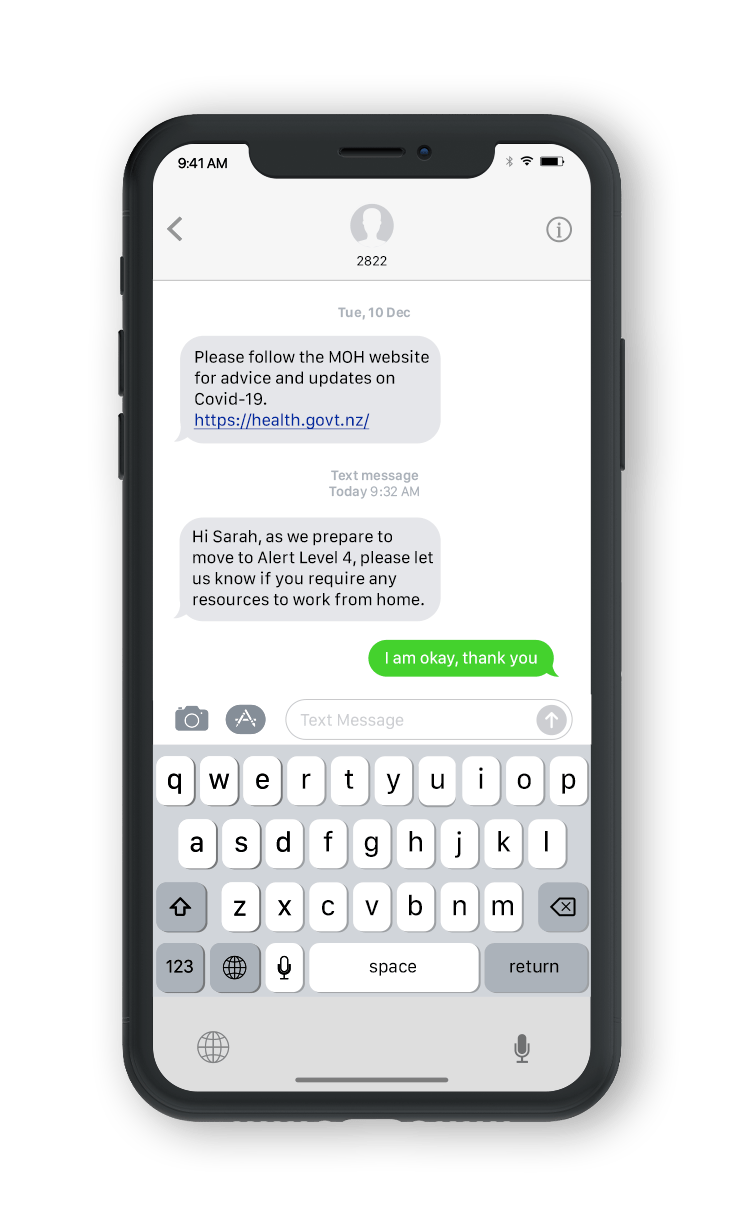Immediate communication before, during and after a crisis is critical. Customers will want to know how they are impacted. Suppliers, employees and their families will also want to know what is going on. Having a crisis communication plan allows you to communicate the right message, to the right audiences, at the right time.
Here are a few key steps you can take to ensure your business is ready.
Segment your audiences
During a crisis or emergency, various affected people will be looking for different information. Start by segmenting your audience based on the information they require. From there figure out who, within your organization, is best to handle communications with each audience.
Some audiences may include:
· Customers
· Employees and their families
· Suppliers
· The community
· Management
· Media
Keep contact information up-to-date
Keep your audiences contact information up-to-date at all times. This information should also be easy to access immediately during an incident.
Lists should be stored electronically on a secure server that can be accessed remotely. It is also a good idea to keep hard copies at alternate locations.
Customers
As the lifeline of your company, it is important customer communications are a top priority. These communications could be assigned to customer service representatives or account managers.
Employees, those affected and their families
It is important to coordinate communications with all employees and their families. Human Resources is generally responsible for employee communications.
The Community
If there are hazards that could potentially impact the surrounding community, it is important that they are made aware. These communications should be coordinated with public safety officials to develop protocols and procedures.
Suppliers
Suppliers will need to be notified of any disruptions. It’s important to plan when and how they will be notified.
Management
It’s vital that management are informed of any disruptions before they learn about the problem in the media. This may include any directors, investors and any other important stakeholders. Careful protocols should be put in place for deciding whether an issue is severe enough to contact this audience.
Media
Depending on the severity of the case, the media will be reaching out to get details. Appoint a spokesperson who is responsible for managing these communications. The spokesperson should be well prepared with talking points and able to speak with efficacy. Ensure that all other employees are aware that they should not respond to any media enquiry.
Given the situation will likely be very stressful, it may also help to have a plan in place for the development of a press release and prioritisation of media requests.
This information is an adaption of the Ready Campaign’s Ready Business Guidelines.

Ensure your Business Continuity Messaging strategy performs
A good strategy covers multiple formats, messages and actions to be taken. Here are some top-level considerations for your messaging strategy:
· Plan your comms beyond one-off messages. Consider how situations will change, and how you may send other communications. Numbering updates can help people understand the context of the information they are receiving.
· Frequent updates to key audiences can prevent rumours and lower anxiety. In places, sending shorter and more frequent comms are more effective.
· Consider when to segment your audience. Bulk messaging is good to ensure you reach everyone, but these comms can feel the most impersonal. While sounding professional is key, balance this with a human tone. Sending segmented messaging to different audiences can allow you to be more helpful and personalised.
· If possible, personalise your messaging with tags like {First Name} to improve engagement.
· Go for clarity over cleverness. Clear thinking leads to clear writing.
· Consider creating handset initiated communications, that is, automating the provision of information, to reduce pressure on your contact centre.
· Match your message to your format and audience. Webinar, SMS, Social Media, and Email are all dramatically different:
· Emails are often long-form and by default are more formal in nature. Webinars are great for educational content. Social media is great for frequent medium length updates.
SMS is the most engaging form of communication available. The short form means people know the message will be concise and important. For many organisations SMS is the most under-utilised channel.
Connect and engage
Our SMS platform will unlock your communication allowing you to better plan and communicate in emergencies.
· SMS is fast & easy
· Our API integrates with your system to ensures your contacts are automatically up to date - they can also be updated manually
· Support multiple lists for managing multiple audiences collectively or individually
· Use templates for quick communication
· Manage business communications centrally, streamlining BCP processes
· 2-way messaging can allow you to easily respond to people who need help or receive feedback
· Cloud-based platform for complete redundancy from internal platform
· Sophisticated reporting suite to manage replies and provide further assistance
· URL links can direct people to real-time info and more complex forms which can help people better self-assess situations or access more information if required
Our team is on standby to help. We can get organisations like yours up and running with our SMS platform in moments. Please get in touch if you have questions or would like to know more.